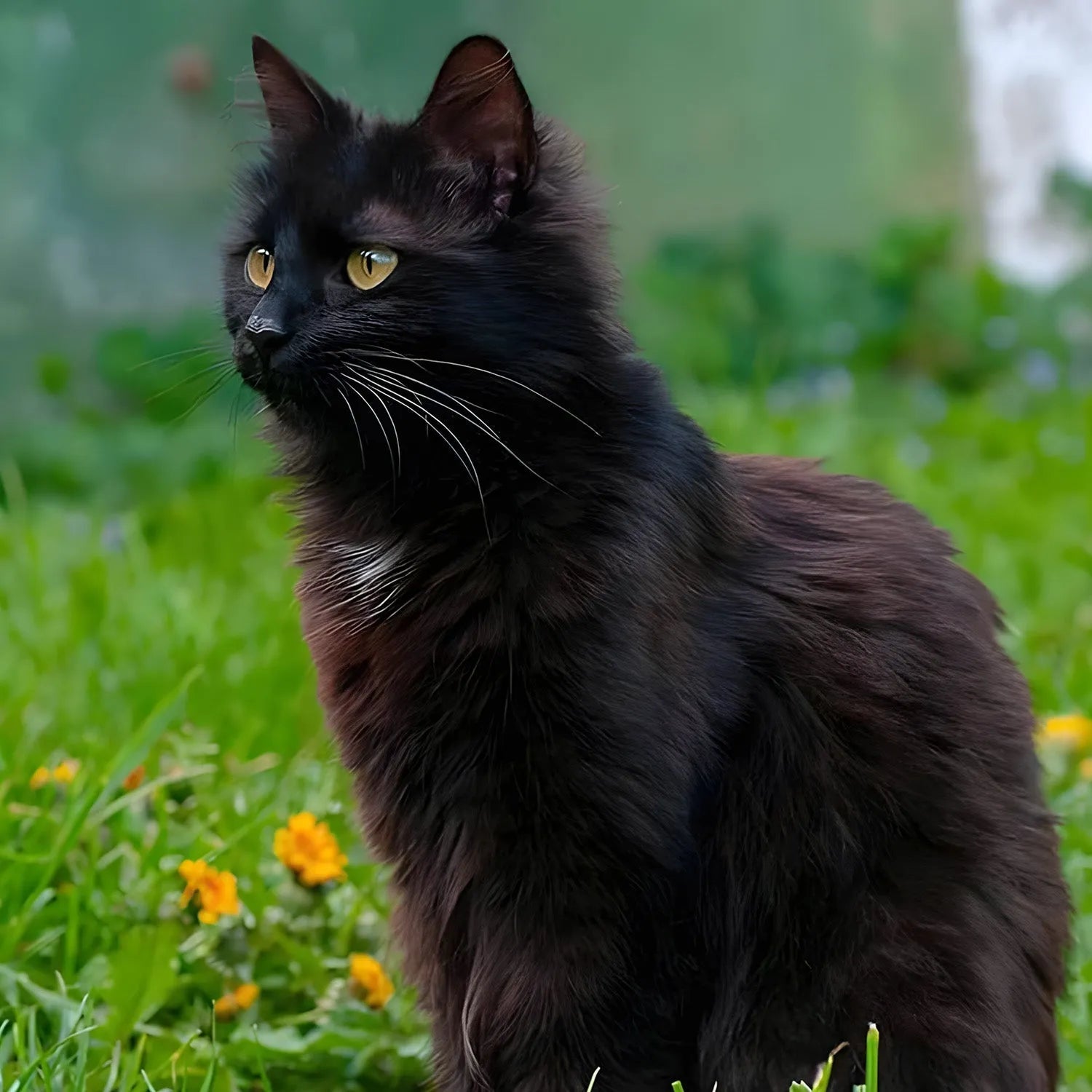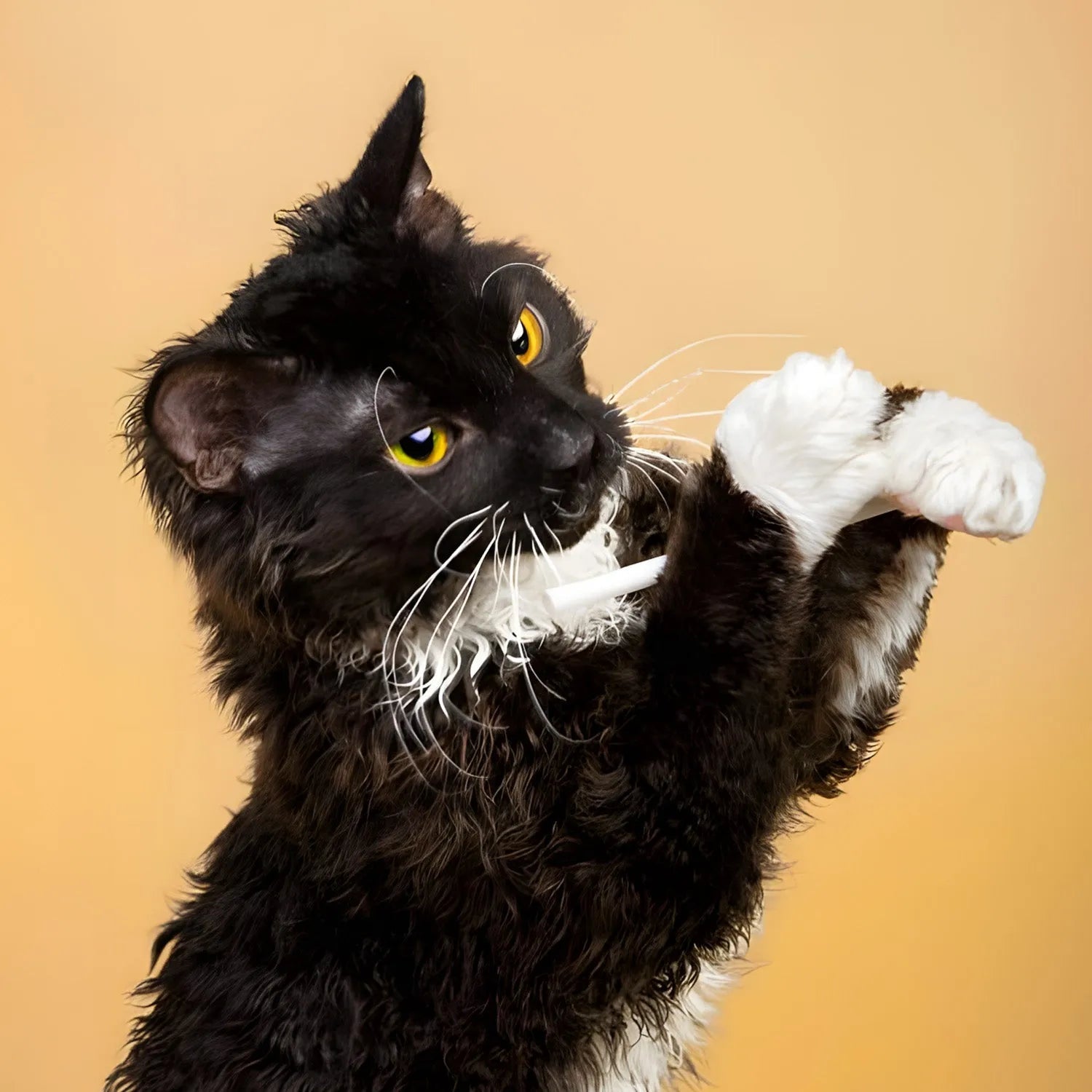Serengeti: The Exotic and Graceful Domestic Wildcat
Introduction
The Serengeti cat is an eye-catching and graceful breed developed to resemble the wild African serval, without the use of wild cat ancestry. Created through selective breeding, the Serengeti boasts long legs, a slender body, and a striking spotted coat, giving it a wild, exotic look. Despite its wild appearance, the Serengeti is a fully domestic cat with a loving and playful nature. These cats are energetic, intelligent, and thrive in environments where they can explore, play, and interact with their human companions. In this blog, we’ll dive into the Serengeti’s lifestyle, behavior, grooming needs, and how it interacts with humans and other pets.
Ratings (1-5)
-
Environmental Adaptability: 4
-
Food Consumption: 3
-
Need for Companionship: 4
-
Trainability: 5
-
Tolerance of Children: 5
-
Ease of Domestication: 4
History and Origins
The Serengeti cat was first developed in 1994 by Karen Sausman, a breeder and conservation biologist in California. Her goal was to create a domestic cat breed that closely resembled the African serval without using any wild cat genes. To achieve this, she selectively bred Bengals and Oriental Shorthairs, two domestic breeds known for their sleek bodies and exotic coat patterns. The resulting breed, the Serengeti, successfully mimicked the serval’s wild look while maintaining the temperament of a domestic cat.
Since its development, the Serengeti breed has steadily grown in popularity, although it is still relatively rare. The breed has not yet been recognized by all major cat associations, but it has gained fans worldwide for its beautiful appearance and friendly, active personality.
Physical Characteristics and Colors
The Serengeti is a medium to large-sized cat, with long legs, a sleek, muscular body, and a striking appearance that gives it a wild, exotic look. These cats are known for their long, slender legs and large ears, which are reminiscent of the serval’s features. Their almond-shaped eyes and alert expression add to their wild charm.
The most distinctive feature of the Serengeti is its spotted coat, which mimics the serval’s markings. The coat is short, dense, and comes in a variety of colors, including:
-
Spotted Tabby: The most common pattern, with bold, dark spots on a background of golden, silver, or black fur.
-
Solid Black: Although not spotted, solid black Serengetis are striking in appearance, with their sleek, glossy coats.
-
Despite their wild look, Serengetis have a soft and silky coat that is easy to care for, making them an attractive choice for cat lovers who want a unique but low-maintenance pet.
Lifestyle and Behavior
Serengeti cats are highly energetic and playful, making them well-suited to active households. They are known for their grace and agility, often displaying impressive athleticism by leaping onto high perches or darting around the house in playful bursts of energy. Serengetis are natural climbers, so providing them with cat trees, climbing shelves, and interactive toys will help keep them entertained.
These cats are also known for their social and affectionate nature. They form strong bonds with their human family members and love being involved in household activities. Serengetis enjoy attention and will often follow their owners around the house, eager to engage in play or snuggle up for some affection. However, they are not overly clingy and can entertain themselves when their owners are busy, making them a great balance between independence and sociability.
Because of their high energy levels, Serengetis need regular playtime and stimulation to stay happy and healthy. They enjoy games that challenge their intelligence and give them opportunities to show off their impressive agility.
Trainability and Intelligence
Serengeti cats are highly intelligent and can be trained to follow commands, perform tricks, and even walk on a leash. They respond well to positive reinforcement techniques, such as treats and praise, and they enjoy learning new things. Because of their natural curiosity and love for interactive play, Serengetis excel at puzzle toys and games that challenge their minds.
Their intelligence also means they are quick learners, and they can easily pick up new skills with consistent training. Training sessions with Serengetis should be fun and engaging, as they thrive on mental stimulation and enjoy showing off their skills. Whether teaching them to fetch, walk on a leash, or solve puzzle games, Serengetis are eager to learn and interact with their human companions.
Social Behavior and Human Interaction
Serengetis are social and affectionate cats that love spending time with their human family members. They form deep bonds with their owners and enjoy being included in daily activities, often following their humans from room to room. While they are affectionate and enjoy cuddles, they are not typically lap cats—they prefer to be active, climbing, playing, or exploring their environment.
These cats are also known for their vocal nature, and they will often "talk" to their owners with a variety of chirps, meows, and trills. Serengetis enjoy being the center of attention and will engage with their owners in playful conversations, adding to their charm and personality.
While Serengetis love human interaction, they are also independent enough to entertain themselves when needed. They are not prone to separation anxiety, making them suitable for households where the owners may be away during the day, as long as they have plenty of toys and activities to keep them occupied.
Compatibility with Children and Other Pets
Serengeti cats are excellent companions for children due to their playful and tolerant nature. They enjoy interactive play and are generally patient with children’s antics, provided they are treated with respect. Their high energy levels make them great playmates for active kids who enjoy games like fetch or chase.
In addition to being good with children, Serengetis also tend to get along well with other pets, including dogs. Their sociable and adaptable nature allows them to integrate well into multi-pet households, and they often enjoy the company of other animals. However, proper introductions are essential to ensure a smooth transition, especially if introducing them to smaller animals like birds or rodents, as Serengetis have a high prey drive.
Grooming and Care
The grooming needs of a Serengeti cat are relatively low due to their short, dense coat. Weekly brushing is usually sufficient to remove loose hairs and keep their coat looking sleek and healthy. Because their fur is short and doesn’t mat easily, Serengetis are a low-maintenance breed when it comes to grooming.
In addition to regular brushing, Serengetis require routine dental care, ear cleaning, and nail trimming to maintain their overall health. Despite their exotic appearance, Serengetis are fully domestic cats and are easy to care for, making them a good choice for owners who want a cat that looks wild but requires minimal grooming.
Health and Lifespan
Serengetis are generally healthy cats, with few breed-specific health issues. Because they are a relatively new breed, there are no major genetic health concerns associated with Serengetis at this time. However, like all cats, they can be prone to common feline health problems such as dental issues or obesity if not properly cared for.
Regular veterinary check-ups, a balanced diet, and maintaining a healthy weight are essential to keeping your Serengeti in good health. With proper care, Serengeti cats typically live 12-15 years or more, making them long-term companions for any family.
Environmental Adaptability
Serengeti cats are adaptable and can thrive in various living environments, whether in a small apartment or a larger home. They are particularly well-suited to indoor living, where they can enjoy a calm and predictable routine. However, because of their high energy levels and natural curiosity, Serengetis need plenty of stimulation and opportunities for play.
Providing them with cat trees, interactive toys, and climbing structures will help keep them entertained and prevent boredom. Some Serengeti owners even build secure outdoor enclosures (catios) where their cats can safely explore the outdoors.
Feeding Requirements
A balanced diet is crucial for maintaining the health and energy levels of Serengeti cats. High-quality cat food that is rich in protein is recommended to support their muscular build and overall well-being. Fresh water should always be available. Because Serengetis are active and energetic, it’s important to monitor their food intake to ensure they are receiving the proper nutrition to support their high activity levels.
Consult your veterinarian for specific dietary recommendations based on your cat's age, weight, and health needs. Regular play sessions and activities that encourage physical movement can also help keep your Serengeti healthy and fit.
Conclusion
The Serengeti is a striking and exotic-looking breed that combines the grace and beauty of a wildcat with the affection
and playfulness of a domestic cat. Their high energy levels, intelligence, and love for human interaction make them a fantastic companion for active individuals or families who can provide plenty of play and attention. If you’re looking for a unique, active, and loving feline friend, the Serengeti may be the perfect fit for you.
For more information about other cat breeds and pet care tips, stay tuned to our blog!
References:
-
Johnson, S. (2021). "The Exotic and Playful Serengeti Cat." *Journal of Feline Studies*, 35(3), 215-230.
-
Thompson, A. (2020). "Caring for Your Serengeti: A Comprehensive Guide." *Cat Lover’s Magazine*, July issue, pp. 25-33.
-
Harris, E. (2019). "Health and Wellness in Serengeti Cats." *Veterinary Journal*, 79(2), 123-137.


